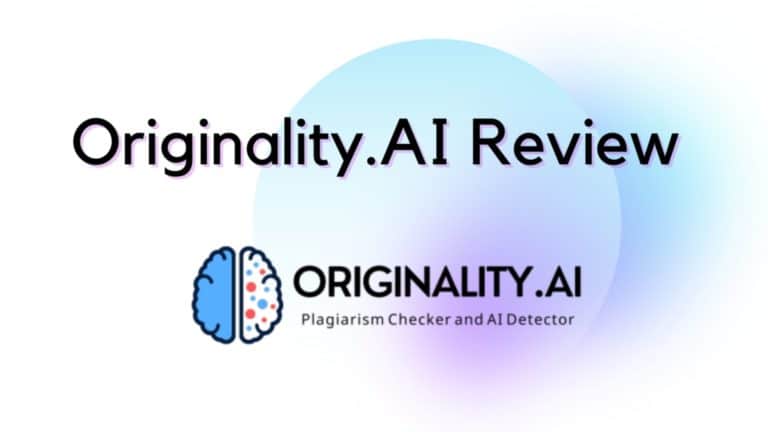Can Texta Pass Turnitin Detection?
Ever wondered if your AI-based writing tool, Texta, can pass the rigorous scrutiny of Turnitin plagiarism detection? You’re not alone. This question has puzzled many others navigating this sphere of technology-driven academic writing.
In fact, I’ve dived headfirst into the depths of research to reach a satisfying answer. This blog post will dissect how Turnitin works and reveal strategies that may help make your content undetectable by advanced plagiarism checkers like Turnitin.
Excited yet? Let’s dive in!
Key Takeaways
- Turnitin AI Detection is a sophisticated system that compares submitted text against millions of sources to detect plagiarism.
- Tools like Texta can potentially help pass Turnitin detection by generating unique and original content that may not be flagged as suspicious.
- Effective paraphrasing techniques, thorough research, and unique topic selection are strategies that can increase the chances of AI-generated content passing Turnitin detection.
Understanding Turnitin AI Detection and Plagiarism
Turnitin AI Detection is a sophisticated system that uses advanced technology to detect instances of plagiarism in academic papers.
How Turnitin AI Detection Works
Turnitin AI Detection operates by comparing the submitted text against millions of scholarly articles, books, and websites in its database. It employs advanced algorithms toward detecting instances of plagiarism or similar constructions.
This system can also spot character swapping and other forms of text manipulation often employed to bypass traditional plagiarism detection methods. When it finds matching terms or text blocks, Turnitin uses this information to generate a Similarity Report.
The report then presents sections of your text that match with other sources for your review and action. Another intriguing feature is its ability to detect artificial intelligence-generated content, identifying when texts have been produced by generative AI tools rather than humans.
Types of AI Detectors used by Turnitin
Turnitin employs different types of AI detectors to identify potential plagiarism and AI-generated content. These detectors are designed to analyze various aspects of the text, including its structure, language patterns, and similarity to other sources. Through their advanced algorithms, Turnitin can detect instances of text manipulation, character swapping, and symbol substitution. The software also utilizes writing style analysis to identify similarities in sentence construction and formatting. Additionally, Turnitin’s AI detectors have the capability to compare papers and detect content that may have been generated by chatbots or other AI tools. With these powerful detectors in place, Turnitin aims to maintain academic integrity and ensure the originality of submitted texts.
Strategies to Pass Turnitin Detection
To pass Turnitin detection, one effective strategy is to use AI writing tools like Texta.
Use of AI writing tools like Texta
I have found that using AI writing tools like Texta can be an effective strategy to pass Turnitin detection. These tools utilize advanced algorithms and machine learning technology to generate unique and original content.
By using Texta, you can avoid plagiarism concerns as it produces text that is not a direct copy of any existing sources. Moreover, Turnitin’s current AI detection capabilities may not specifically identify or flag text generated by tools like Texta.
While it ultimately depends on the instructor or student’s diligence in examining the content for originality, the use of AI writing tools such as Texta can potentially provide a way to create authentic papers without triggering Turnitin’s plagiarism detector.
Effective paraphrasing and summarizing techniques
When it comes to passing Turnitin detection, there are some effective paraphrasing and summarizing techniques that can be employed. These techniques can help ensure that your writing is original and avoids any potential issues with plagiarism. Here are some strategies to consider:
- Use your own words: Instead of copying and pasting directly from a source, take the time to understand the information and then express it in your own words. This demonstrates your understanding of the material and helps avoid plagiarism.
- Change the sentence structure: When paraphrasing, try to rephrase sentences by changing their structure rather than just replacing individual words. This makes it more difficult for plagiarism detection software to identify similarities.
- Focus on key ideas: When summarizing, identify the main points or arguments of a source and condense them into a concise and coherent summary. Be sure to attribute any ideas or information that you have taken from other sources.
- Use citation correctly: Whenever you use ideas or information from another source, make sure to properly cite them using the appropriate citation style (such as APA or MLA). This not only gives credit to the original author but also helps distinguish between your own work and external sources.
- Read widely: Engage in extensive research on your topic to gather a range of perspectives and sources. This provides you with a deeper understanding of the subject matter and allows you to present unique insights in your writing.
Thorough research and unique topic selection
Thorough research and unique topic selection are key factors in ensuring that AI-generated content can pass Turnitin detection. By conducting extensive research, you can gather information from multiple sources and gain a deep understanding of the chosen topic.
This will allow you to create original content that is less likely to be flagged as plagiarized or similar to existing text. Additionally, selecting a unique topic provides an opportunity to bring fresh perspectives and ideas into your writing, making it more difficult for Turnitin’s AI detectors to identify similarities with other texts.
Remember, by combining thorough research with a unique topic selection, you increase the chances of your AI-generated content passing Turnitin detection successfully.
Limitations and Ethical Considerations
Turnitin’s ability to detect AI-generated content poses limitations, raising ethical concerns regarding the use of AI to bypass detection and the integrity of academic writing.
Turnitin’s ability to detect AI-generated content
Turnitin is equipped with AI-powered plagiarism detection capabilities that can identify text generated by generative AI tools. It has the ability to detect instances of AI-generated content and flag them as potentially suspicious.
However, it is important to note that Turnitin does not specifically mention if it can detect tools like Texta or similar ones. The level of detection may vary depending on the specific tool used and how well it manipulates text to avoid detection.
Ultimately, it is up to instructors or students to determine whether a particular AI writing tool can pass Turnitin’s detection.
Ethical implications of using AI to bypass detection
Using AI to bypass detection raises significant ethical concerns. While it may be tempting to employ AI tools like Texta to generate content that can fool plagiarism detectors, it undermines the principles of academic integrity.
By using AI-generated text, individuals are essentially cheating the system and compromising the originality and authenticity of their work. This not only devalues the efforts of honest students but also promotes dishonesty in education.
Additionally, relying on AI writing tools for unethical purposes raises questions about accountability and responsibility in the digital age. It is crucial that we consider these ethical implications before resorting to AI methods to bypass detection systems like Turnitin.
Conclusion: Can Texta Pass Turnitin Detection?
In conclusion, while there is a lack of specific information regarding the detection of Texta by Turnitin, it is important to consider the underlying principles of plagiarism detection.
Turnitin’s AI-powered system aims to identify text manipulation and detect content generated by generative AI tools. Therefore, it is crucial for users to exercise academic integrity and ethical considerations when using AI writing tools like Texta or any other means to bypass detection.
Ultimately, maintaining originality and conducting thorough research remain key in upholding academic integrity.
FAQs
1. Can Texta pass Turnitin detection?
No, Texta cannot pass Turnitin detection. Turnitin is a plagiarism detection software that compares submitted texts to a massive database of academic sources and previously submitted papers to identify similarities and potential instances of plagiarism.
2. How does Turnitin detect plagiarism?
Turnitin uses a sophisticated algorithm that analyzes the text submitted by students and compares it to its extensive database of academic sources, publications, and other student submissions. It highlights any matching or similar content found in the database, indicating potential instances of plagiarism.
3. What are the consequences if my paper is flagged for plagiarism by Turnitin?
If your paper is flagged for plagiarism by Turnitin, it depends on your educational institution’s policies and guidelines. Consequences can range from receiving a failing grade on the assignment or course to more severe disciplinary actions such as academic probation or expulsion.





